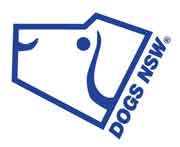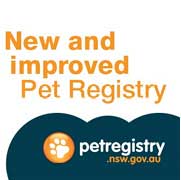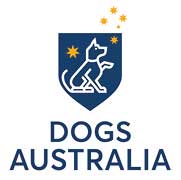News and updates
Approval of 2023 National Utility Gundog Field Trial Championship - CHANGE OF DATE
13-04-2023Please note the change of date for the National Field Trial Championship for Utility Gundogs to be held by Dogs Victoria from 24 & 25 June 2023 to 27 & 28 May 2023.
Dogs Victoria has advised this change due to the quail season being shortened from 12 weeks to 5 weeks.


DOGS NSW Obedience & Tracking Committee - Obedience & Rally Workshop
12-04-2023Date: Sunday, 21st May 2023
Time: 9.30am to 4.30pm
Rally ‐ AM (Novice) & PM (Advanced, Excellent & Master)
Obedience – CCD, Novice, Open, UD & UDX
Rally – Novice, Advanced, Excellent & Master
PLEASE NOTE: Both Obedience and Rally are for beginners to learn and be encouraged to participate and go onto competing in either Obedience or Rally if they wish.
Also, for those competing who would like the opportunity to go through a formal ring with additional help for problems, advice, presentation, etc
Entries can be made online with Show Manager
Entries Close: Monday, 15th May 2023
Entry Fees for Day: $15.00 – 1 Handler 1 Dog
$5.00 – Each additional Dog
All enquiries and/or registration if not using Show Manager to:
Obedience ‐ Carol Domsalla – [email protected] (0439 842 161)
Rally ‐ Shanelle Corben – [email protected] (0422 123 073)
No phone calls after 9.00pm please.

RESIGNATION OF MRS LYN BRAND AS PRESIDENT OF AND DIRECTOR ON THE BOARD OF DOGS NSW
07-04-2023Please be advised that as from Thursday 6 April 2023, Mrs Lyn Brand has tendered her resignation as President of and Director on DOGS NSW Board.
A meeting of the remaining Directors will be held on Wednesday 12 April 2023 to appoint a new Chair and to consider whether to call for nominations to fill the position of Director.
Further advice will be conveyed to members following the meeting on Wednesday next week.

Distance Transfers / Pet Couriers: NSW Pet Registry
06-04-2023The NSW Pet Registry has reached out to inquire about the experience of breeders in transporting puppies to new owners through couriers or similar services. Their development team is currently working on the ownership transfer process for such situations for the new NSW Pet Registry, and they would greatly appreciate any input from breeders with this experience to help them with the design phase.
Breeders who have had experience with transporting puppies in this way are encouraged to contact Mel Frazer at [email protected]. They would love to hear our members' thoughts and insights by the end of next week.
Thank you for your time and assistance!

Attention Clubs: FCI A20 Show Results Form
04-04-2023Dogs Australia has been advised by the FCI A2O Secretariat that the following form is required when sending in the results of your FCI A2O Shows.
This form should be accompanied with a digital copy of the show catalogue.
Please click here to download the FCI A20 Show Results Report Form.

National Code of Practice of Responsible Dog Ownership - Correction
27-03-2023CORRECTION
Please note the amendment to Dogs Australia National Code of Practice of Responsible Dog Ownership, Clause 13, which now reads:-
13. Subject to the legislation in the relevant State or Territory, a member shall not breed a bitch causing it to whelp more than twice in eighteen months.
(Amended 02/23, 5.3 – Effective 01/07/2023)

It's Election Day today so make your vote count and know all the facts!
25-03-2023As the peak body for breeders of purebred dogs in this State, DOGS NSW finds the practice of puppy farms/mills abhorrent, and we agree there should be a concerted effort to tackle it.
The Daily Telegraph’s article ‘NSW election: Emma Hurst MP, @AnimalJusticeParty call out blatant lies in antiparty campaign’ lacks research, includes misinformation and, we believe, lacks fact-checking. It also makes false statements regarding DOGS NSW, particularly the content of the NSW radio advertisements mentioned in the article, which mentions the Companions and Pets Party.
You can read the Daily Telegraph article by clicking here.
Please click here to read DOGS NSW response letter to the Daily Telegraph to correct the article.
On DOGS NSW website we have stated that the key issues with the AJP and Greens are removing legal property ownership of dogs, so you’re only their guardian, eliminating short-nosed (brachycephalic) breeds like Pugs/French Bulldogs and more; restricting breeding conditions such as the de-sexing age from 6 years, even if vet assesses healthy; dogs considered breeding animals over 8 weeks even though not breeding age (recommended 12months); not breeding dogs with genetic conditions even though DNA can rule plan breeding out conditions. These AJP policies lack scientific evidence and research and are part of their policy to promote animal adoption ahead of commercialised breeding.
DOGS NSW are against puppy farming. We love our dogs and have the highest standards of animal welfare and code of ethics.
The Animal Justice Party policies will not solve puppy farming, rather encourage them and foster black market trade with price increases for families; create a scarcity of purebred dogs for families to choose a dog based on their breed (meaning they could end up with a poorly bred dog with behavioural or health problems and increased costs). DOGS NSW only advocates on evidence based research and liaising with qualified industry professionals such as University Professors and Veterinarians.
Ultimately, dog owners and ethical registered breeders will be the collateral damage.
Vote the AJP and Greens below the line (ie, vote them last) at the NSW Election today to make your vote count to save pet ownership!
#informedvoter #nswpol #yourbreedofchoice #ownyourdog #savebrachybreeds

Update on the NSW State Election
24-03-2023One day to go before NSW votes at the election and decides about pet ownership!
Make your vote count so you keep your rights as a dog owner. Don't let political parties remove your rights and options as a dog owner.
Renowned vet and TV's Better Homes and Gardens Dr Harry Cooper agrees the Companion Animals Bill only seeks to control registered responsible breeders rather than eliminate puppy farming. He believes in one solution which is traceable identification, such as the NLIS scheme for cattle where animals are identified from birth, and while that is not a practical solution in the case of puppies, identification from 6 weeks is and they shouldn't be sold without a microchip.
"Further study of the bill makes assumptions and seeks enforcements of practices that have no scientific background that I am aware of. Show me the evidence that puppies can be selected at 8 weeks as being suitable or unsuitable breeding stock. Show me the evidence attached to the value of de-sexing male dogs at 6 years of age. Show me the evidence that ‘defects’ are genetic and therefore ‘inherited’."
Please click here to read Dr Harry's full letter.
Make sure you know who you're voting for this Saturday 25 March. Support parties who value your right to choose a dog of your choice. Unfortunately, last year the Bill passed in the upper house with the support of Labor, Greens and Animal Justice Party. Don't let it pass legislation by voting for these parties and giving them more seats in NSW Parliament. The parties which support the Bill not proceeding are Liberal, One Nation and Shooters, Fishers & Farmers Party.
DOGS NSW is dedicated to continued high standards of Animal Welfare but sadly the political policies do not solve puppy farming, rather encourage them and make dog ownership that much harder for families in NSW.
* Vote the Greens and AJP below the line (ie, vote them LAST) to make your vote count to support companion animals and the rights of dog owners.
Please forward to as many as your networks as possible or our social media posts today.![]()
![]()
 LinkedIn is newly created so please like, share and follow.
LinkedIn is newly created so please like, share and follow.

DOGS NSW Regional Grant Program
21-03-2023The DOGS NSW Finance Committee would like to advise Affiliates that the Regional Grant Program has now been finalised.
Further, the Committee would like to engage those Affiliates who were successful in their Grant Application and, subsequently received funding from the Program to send photographs of what they purchased and how those items are being used.



